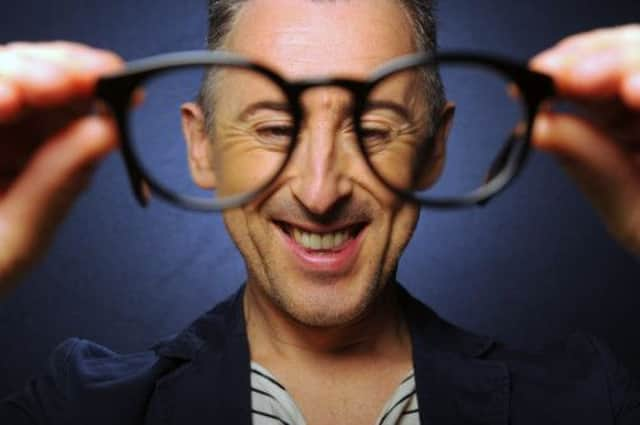Brian Ferguson: Cultural shift seems to be real deal


These were the early, dark days of what became known as the “Creative Scotland stooshie” and there was no escaping the issue.
Kieran Hurley, who scooped the coveted best new play at the Scottish theatre “Oscars” last year, was among several winners and presenters to speak out on a shake-up from the quango, which had cut adrift dozens of arts groups from the safety net of annual support.
Advertisement
Hide AdAdvertisement
Hide AdHe seemed to sum up the entire farrago when he complained that the entire sector was being increasingly confronted by “marketplace-driven language”.
Afterwards, guest of honour Alan Cumming warned Creative Scotland had only seen the tip of the iceberg of discontent, because so many artists were “worried about biting the hand that feeds them”. He said: “These are artists, not business models, but some people feel they are being treated like that.”
Cumming’s iceberg went on to shake the very foundations of the arts world in Scotland, left the national funding body in a state of disarray – and without a figurehead for six months – and turned the SNP’s flagship “Year of Creative Scotland” campaign into a cringeworthy embarrassment.
Strangely, though, as the Traverse Theatre in Edinburgh had its turn to host those awards yesterday, an unmistakable feelgood factor is suddenly in the air – and not just because Creative Scotland finally has a new chief executive.
Much of that is down to Scotland’s culture secretary. Fiona Hyslop’s keynote address in Edinburgh on Wednesday, spelling out her “vision” for culture and heritage, was probably even better received than she could have hoped for. It was easily the most significant speech she has made, after three years in the post, and finally gave many of those at the heart of the “stooshie” what they were looking for.
But why it on earth did it take so long to make such a contribution? Couldn’t much of the anguish over the last year have been avoided had she intervened more quickly? If only it were that simple. Right from the off, this has been an artist-led dispute. And, for me, the vision outlined by Ms Hyslop has been largely shaped by the turbulent events of the last 12 months.
The reason so much of her speech has chimed with the key protagonists is that it directly embraces so much of what was said in those “open sessions” Creative Scotland embarked on around the country in March and April.
Pat Kane, the musician and commentator, who chaired those eight sessions, told his Twitter followers Ms Hyslop’s speech “feels like a big shift”.
Advertisement
Hide AdAdvertisement
Hide AdWhile there is little doubt he was seen by many as a barrier to progress, Andrew Dixon’s resignation as Creative Scotland’s chief executive was likely to be a starting point for change. So it has proved.
But, as some have pointed out, Creative Scotland appears to have been pursuing a target-driven agenda not far removed from the one Ms Hyslop is now railing against, an agenda largely set when it was created by the Scottish Government.
It’s worth remembering that infamous open letter signed by 100 of Scotland’s leading artists described Creative Scotland as having a “corporate ethos that seems designed to set artist against artist and company against company in the search for resources”.
Not only that, but arts and culture are entirely devolved – and the SNP has been in power for six years.
Yet only now are we told the Scottish Government “does not look at out our cultural life and heritage as if they are merely products that can be bought and sold”. She also said: “I don’t need or want the culture or heritage sector to make a new economic or social case to justify public support.”
That is a far cry from Creative Scotland chairman Sir Sandy Crombie’s initial response to that letter: “They who provide the money have a right to ask what will result from that investment.”
When challenged later as to whether the speech really marked a major policy change, Ms Hyslop talked cautiously about a period of “resetting, recalibrating, re-empowering and re-engaging” for the whole cultural sector.
I’d suggest there will be plenty people eagerly waiting to get their teeth into that particular bone – when there’s a bit more flesh on it.